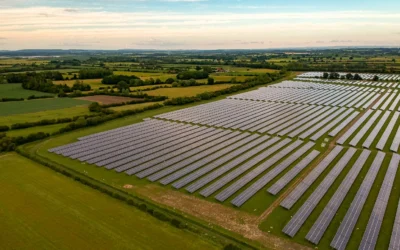Researchers have unveiled a new design for transparent solar cells (TSCs) that could revolutionize energy generation in urban environments. The study, by researchers from the Ulsan National Institute of Science and Technology, was published last year in the Proceedings of the National Academy of Sciences. It introduces an all-back-contact neutral-colored transparent crystalline silicon solar cell, addressing longstanding challenges in the field. These are an innovative type of solar cell designed for transparency, efficiency, and aesthetic appeal, especially for use in building-integrated photovoltaics (BIPVs).
Transparent solar cells have long been hailed as a promising solution for integrating energy generation into windows and facades, especially in cityscapes where space is at a premium. However, achieving a balance between transparency, color neutrality, and efficiency has been a significant hurdle. Traditional designs often compromise on one aspect to enhance another, limiting their practical applications.
The innovative design presented in this study utilizes an all-back-contact approach, which means that all the electrical contacts are positioned on the rear side of the cell. This configuration eliminates the need for front-side electrodes, allowing for a more uniform appearance and enhanced transparency. Moreover, by carefully engineering the cell’s structure, the researchers achieved a neutral color, making it aesthetically appealing for architectural applications.
One of the standout features of this design is its use of crystalline silicon, a material renowned for its efficiency and stability in traditional solar cells. By adapting crystalline silicon for transparent applications, the team has managed to retain high efficiency levels while ensuring the cells remain see-through. This is a notable departure from previous TSCs that often relied on organic materials, which, while transparent, typically suffer from lower efficiencies and shorter lifespans.
The implications of this development are vast. Imagine skyscrapers with windows that not only provide natural light but also generate electricity, reducing the building’s overall energy consumption. Such integration could play a pivotal role in urban sustainability efforts, turning passive building components into active energy producers.
However, as with any emerging technology, there are challenges to address before widespread adoption becomes feasible. Manufacturing processes need to be refined to ensure scalability and cost-effectiveness. Durability and long-term performance in varying environmental conditions will also require thorough evaluation.
The landmark trial successfully charged a smartphone directly through the screen, demonstrating the potential for these cells to be used on various devices. With an energy conversion efficiency of 15.8% and 20% transparency, these cells offer a good balance between energy production and see-through capabilities. They could be integrated into automotive glass, building windows, and electronic device screens.
This new design for transparent crystalline silicon solar cells marks a significant step forward in the quest for integrating renewable energy solutions into our daily environments. While further research and development are essential, the potential applications of this technology offer an exciting glimpse into a future where our buildings contribute actively to a sustainable energy landscape.




